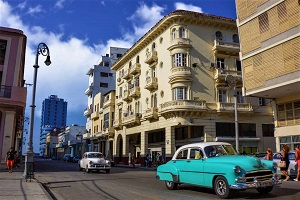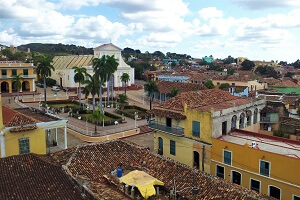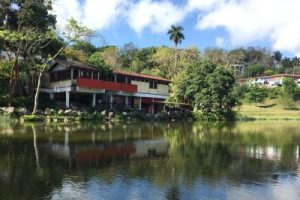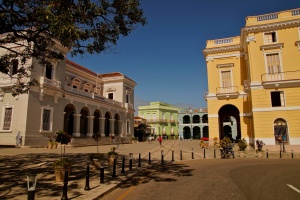Bacardi vs. Havana Club: Old rum in new bottles?!
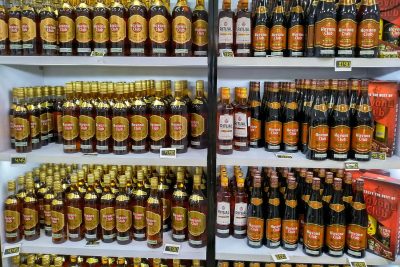
Updated: Dec 19, 2022
Updated: Dec 19, 2022
People in Cuba drink rum – and a lot of beer (cerveza). But let's stick to rum. The best-known Cuban sugarcane distillate is famously sold as Havana Club. Less well known is that Havana Club in a sense is Bacardi rum in new bottles. So let's start at the beginning of the story:
Bacardi, a rum dynasty
The Bacardí rum dynasty began on February 4, 1862, in Santiago de Cuba, by Facundo Bacardí i Massó (1814-1887), who had immigrated from Spain. The bat depicted in the Bacardi logo is considered a symbol of good luck in Cuba. Bacardi rum, which was produced in Cuba, quickly attracted international attention, and its outstanding quality was recognized at the World's Fair in Philadelphia in 1876. The medal awarded at that time still decorates every Bacardi bottle.
Bacardi, the first multinational Cuban company
Bacardi was the first Cuban company that expanded into foreign countries. In 1910, a bottling plant was built in Barcelona. A plant in New York took its place in 1916, followed by distilleries in Mexico and Puerto Rico in 1934. Traces of the mighty Bacardi family can still be found in Cuba today. They stretch from Havana to Santiago de Cuba. In downtown Havana, for example, an imposing Art Deco building, the Edificio Bacardi, bears witness to the almost immeasurable wealth of the family. In Santiago de Cuba, next to another imposing company building, lie the bones of several early family members.
Bacardís in the fight for freedom
At the end of the 19th century, Emilio Bacardí, the son of the company's founder, fought against the Spanish occupation forces in the Cuban War of Independence. In the course of this engagement, he was exiled from Cuba twice. After gaining independence, Emilio Bacardí became the first freely elected mayor of the city of Santiago de Cuba, the second most important city on the island after all.
About half a century later, the Bacardí family initially also supported the renewed fight for freedom, the Cuban Revolution, in other words the struggle of the revolutionaries around Fidel Castro against the dictator Fulgencio Batista. After the victory of the guerrillas in January 1959, a poster with the words Gracias Fidel was displayed on the company building in Havana.
Allies become enemies: Bacardi vs. Castro
However, this support for the new Cuban leadership lasted only a short time, because it was followed in October 1960 by uncompensated expropriation and nationalization of all property and means of production. As a result of this development, the Bacardís emigrated, most of them going, like many privileged Cubans, to the United States, mainly to Miami.
While the company's headquarters were moved to the Bahamas, most production has since taken place in Puerto Rico.
From then on, the Bacardís became heavily involved against the new Cuban regime. Members of the management planned, among other things, attacks on Cuban infrastructure up to assassination attempts on Raul and Fidel Castro as well as Che Guevara. The assassinations were to be carried out by members of the Italian-American mob in cooperation with the CIA.
On the political level, the Bacardís became a driving force in the formulation of the full-scale trade embargo against Cuba, which was thus dubbed the “Bacardi boycott.”
Decades-long legal dispute in the USA
While Havana Club sold in the rest of the world contained Cuban rum, this was not always the case in the USA. In 1996, a company operated by Bacardi launched a rum under the Havana Club brand name with a modified label in the USA. This was complemented by the quite bizarre slogan “Havana Club – Puerto Rican Rum”, while the original is of course “El Ron de Cuba”.
A long-running legal dispute developed over the trademark – the Havana Club brand name. Bacardi had procured the rights to Havana Club from the founding family, known as Arechabala. Because it was the Cuban José Arechabala who began in Havana in 1934 to market his intoxicating distillate under the today world-famous name. But this company, too, was nationalized after the communist takeover.
Bacardi or Havana Club
The legal dispute between the Bacardís and the Cuban government was initially decided in favor of the Bacardi Group in 2006. The U.S. Patent Office had declared the Cuban government's trademark rights to have expired. This was by all means a significant decision, because the USA is the largest market for the traditional Cuban sugar cane liquors, accounting for almost 20 percent of global demand.
The Cuban state had had the brand protected several times in the USA. For this, Cuba resorted to a cooperation with Pernod Ricard. The French are still responsible for Havana Club's international business today.
It took a decade before the Cuban state-owned company was granted the license to renew the trademark rights again. However, the legal dispute continued for a long time. Another lawsuit filed in the U.S. by Bacardi's was dismissed in April 2022.
But Bacardi also tried to intervene on this side of the Atlantic. In 1999, for example, a lawsuit was filed in Spain over the Havana Club brand. After suffering several legal defeats, Bacardi took the case to the country's Supreme Court, which dismissed the complaint in the last instance in 2011.
